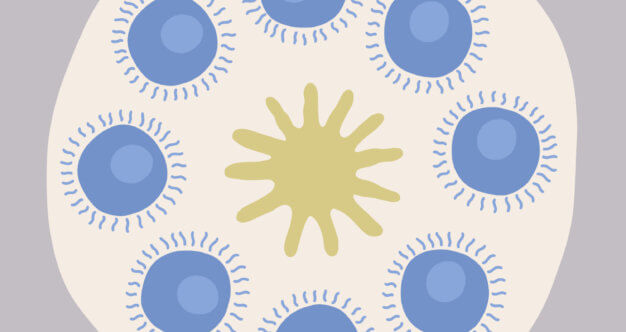For a long time, acute myeloid leukemia has been treated with rigorous chemotherapy, and stem cell transplant. But we don’t talk enough about the patients, usually those over 60, for whom that regimen can be too harsh, and who find themselves with fewer options.
In a new clinical trial, the Leukemia & Lymphoma Society's (LLS) is trying to bring precision medicine to acute myeloid lymphoma. Now, the University of Kansas Cancer Center has joined the trial. “‘As one of only a few centers across the country selected to participate, and the only center in the region, we are able to provide #AML patients access to this groundbreaking trial.’ – Dr. Tara Lin,” tweeted the KU Cancer Center.
Read MoreFor young people, there is a good possibility that chemotherapy can cure the disease. “In a younger person with AML, our chance of curing that leukemia is about 30-40% walking through the door. It may be much higher than that in people who have the good risk genes. It may be much lower than that in people who have the poor risk genes.”
But while the chance of being cured for a young person getting chemotherapy for acute myeloid leukemia is 30% to 40%, for patients over 60 the treatment is much more difficult. “For someone who’s older, over the age of 60, the chance that that person will be cured, alive five years after diagnosis, is less than ten percent. The chance that that person will die from the chemotherapy itself given in the hospital is about the same percentage. Less than ten percent, maybe eight to ten percent. You can see why it’s such a difficult decision over the age of 60 with a diagnosis of acute myeloid leukemia whether or not to receive this aggressive chemotherapy.”
The trial hopes to create a treatment that is more individualized based on the patients’ disease. "For too long we've treated AML as a one-size-fits-all disease when it is really a much more complex grouping of multiple subtypes of blood cancer, and this trial sets out to change that paradigm," Louis J. DeGennaro, Ph.D, LLS's president and CEO told UK Cancer Center News. "Our goal with this innovative trial is to deliver the right drug to the right patient at the right time, and we're encouraged by the progress we've seen in the past year. The addition of a prestigious institution such as The University of Kansas Cancer Center will help us deliver critical help to patients who urgently need better options, now."
Using samples taken from the bone marrow, doctors in the clinical trail can identify specific gene mutations, and then target them using specific drugs. “The protocol uses sophisticated genomic technology to identify the genetic drivers of the patient's AML in order to match them with an appropriate targeted therapy,” says Kansas University Cancer Center’s information.
The trial has enrolled over 490 patients so far.
Learn more about SurvivorNet's rigorous medical review process.

